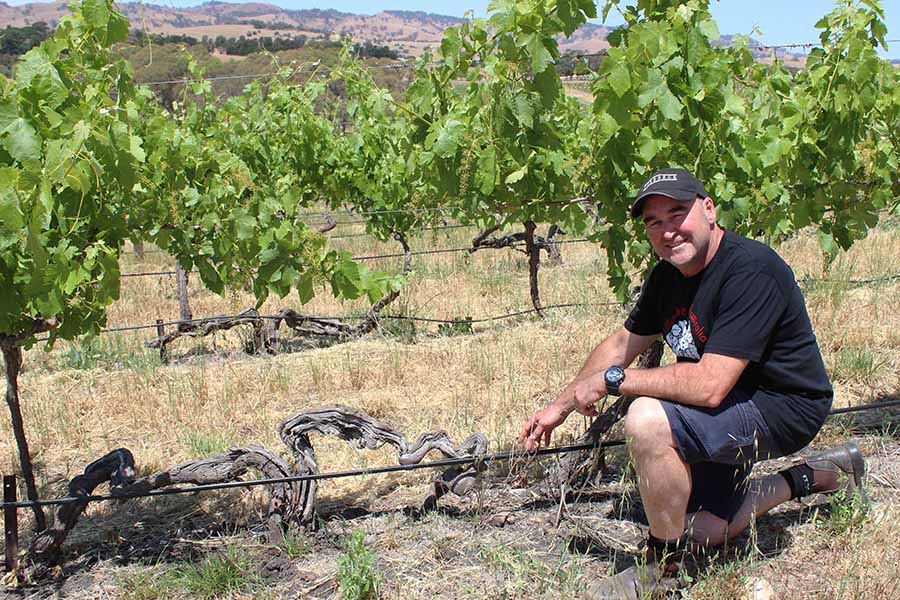When Nigel first arrived at Torbreck in 2015, he was on a mission to get the run-down vineyards up to scratch; however, huge variability in the soil put a spanner in the works. This variability was caused by a number of factors, including differing microclimates across the company's vineyards, and a lack of irrigation on some blocks, which had led to a deterioration in soil health.
'Every metre is different, the difference in soil structure is amazing,' Nigel says.
One vineyard in particular - the Descendant vineyard, in Marananga - was particularly challenging, thanks to old geology in the area and subsequent folding and faulting resulting in huge horizontal variation in soils across the landscape.
Before tackling soil variability, Nigel first had to understand the specifics of the variation. Before Nigel joined Torbreck, soil testing had been limited to a few soil surveys when the vineyards were first planted, and some basic chemistry tests. In 2016, Nigel organised an aerial survey to gather NDVI (normalised difference vegetation index) information on all the vineyards, which informed him of the areas which were lacking vegetative vigour, and areas which were doing well.
Using NDVI information as a guide, Nigel used Australian Precision Ag Laboratory (APAL) testing to analyse the chemical properties of two to three soil samples in each vineyard. Nigel chose samples from the least vigorous and most vigorous parts of each vineyard, as well as a third sample which represented the majority, in instances where there was a large area of similar vigour. Having collected GPS information for each of these samples, he went back to the same areas and conducted a biological test of the topsoil.
The APAL tests showed the best-structured soils had higher calcium, while the worst-structured soils had high potassium and magnesium relative to calcium. The biological testing fell hand-in-hand with the APAL results.
'Where there was good structure, there was good life, and the best vineyards were ones with large areas of good structure, high calcium and good biological activity.' Nigel says.
Once he understood the specifics of the variability, Nigel was able to develop an action plan as to how to improve the soil health in problematic areas, while maintaining good health in the better areas.
'People wanted to manage everything the same way, but I didn't want to, because everything was so different,' Nigel says.
To boost soil health, Nigel applied compost, gypsum (in areas with weak sodic clays) and then a woody mulch. All applications were variable rate, with less-problematic areas receiving less mulch. Mulch is applied following vintage (in autumn), to allow for winter rains to help the mulch to 'settle down'.
The applications have not been one-offs. Since 2016, over 9,000 cubic metres of mulch has been applied to Torbreck vineyards, with another application just around the corner.
'What I've learned with soil health is you cannot stop, it is a constant effort to keep things as they should be,' Nigel says.
Nearly a decade of consistent effort into fixing 'weak spots' and boosting soil health has translated into an increase in both the quality and yield of grapes grown at Torbreck.
'In 2017 we had a few issues with bud mite, but in 2018 we increased yields by 100 per cent in some blocks, in 2019 we got frosted, and in 2020 we had all the flowers blown off with a hot northerly wind. Last year was our most successful year, we went from producing 350 tonnes in 2021 to 439 tonnes in 2022 with a similar environmental footprint, but it has taken us eight years to get there,' Nigel says.
 Torbreck cellar door in Marananga, South Australia
Torbreck cellar door in Marananga, South Australia






